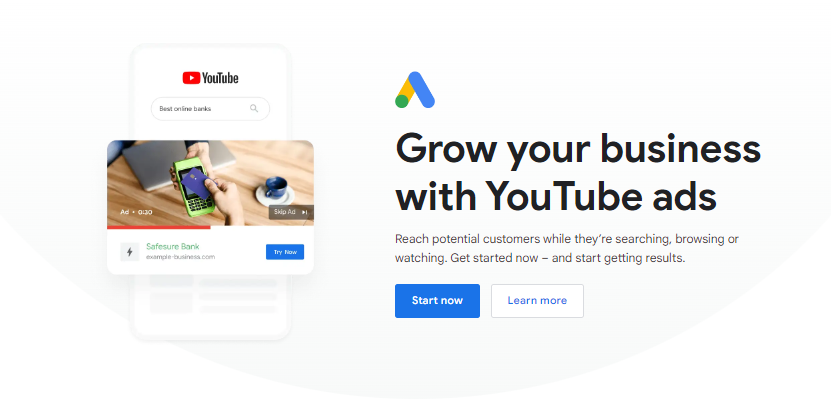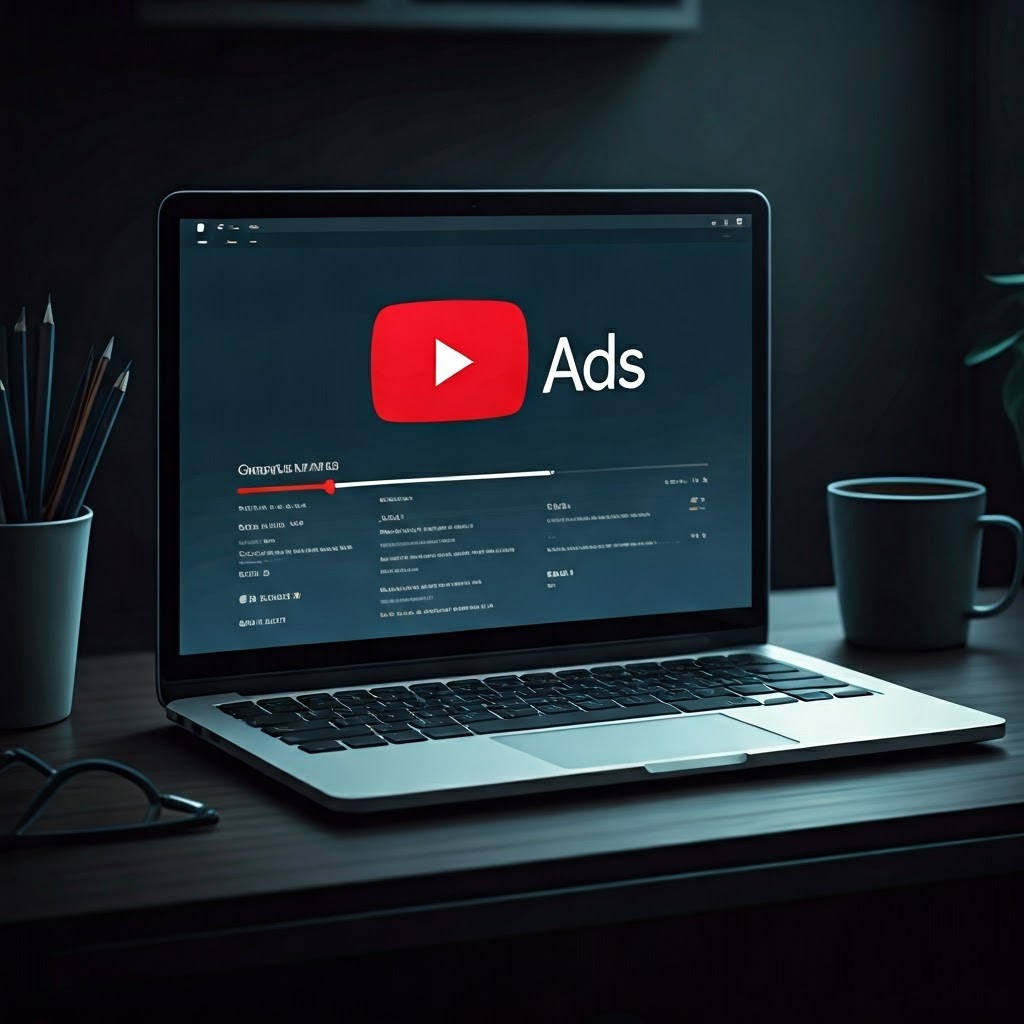December 4, 2024
Google Ads for YouTube Videos: A Complete Guide

Greg Kopyltsov
Founder
google ads for youtube videos


In the digital age, video content reigns supreme. As a powerful platform, YouTube offers an unparalleled opportunity for businesses and advertisers to connect with their target audience in different ways. With a Google Ads account, you can unlock the potential of YouTube advertising and launch effective video ad campaigns to promote your brand and achieve your marketing goals.
YouTube video advertising allows you to showcase your video content to a vast audience on the platform. Unlike organic content, which relies on discoverability, video ads appear prominently in search results, on video watch pages, and even across the Google Display Network.
By leveraging Google Ads, you can create targeted video campaigns to reach potential customers who are most interested in your products or services. This means you can maximize your advertising budget and get your video content in front of the right audience.
One of the first decisions you'll make when creating a YouTube video campaign is selecting the ad format that best suits your objectives. There are several ad formats available, each with unique characteristics and placements.
Skippable ads, as their name suggests, allow viewers to skip the advertisement after a few seconds. These ads typically play before, during, or after other videos and offer flexibility in terms of length. Non-skippable ads, on the other hand, must be watched in their entirety before a viewer can proceed to their chosen content.
Other ad formats include bumper ads, which are short, non-skippable ads ideal for concise messaging, and overlay ads, which appear as banners or text ads superimposed over the video content. Choosing the appropriate ad format depends on your campaign goals and target audience.
When deciding between skippable and non-skippable ads, consider your campaign objectives and target audience.
Ultimately, the best approach is to test different ad formats and analyze their performance to determine what resonates best with your target audience.
Creating a YouTube video campaign is a straightforward process, even if you're new to Google Ads. You'll start by selecting your campaign objective, such as brand awareness, consideration, reach, or a specific marketing goal.
Once you've chosen your objective, you'll be guided through a series of steps to define your target audience, set a budget, choose relevant keywords, and create compelling ad copy.
When setting up your YouTube video campaign, you'll be prompted to choose an objective that aligns with your marketing objectives. Google Ads offers various campaign types tailored to specific goals, including:
To maximize the effectiveness of your YouTube video campaigns, you need to target your audience precisely. Google Ads provides robust targeting options, allowing you to reach potential customers based on factors like:
By strategically utilizing these targeting options, you can refine your audience and ensure that your ads reach the people who are most likely to be interested.
Setting a budget for your YouTube ads is crucial to ensure that your spending aligns with your marketing goals. With Google Ads, you have control over your daily or campaign-total budgets.
One common approach to budgeting for YouTube ads is using cost-per-thousand impressions (CPM) bidding, where you pay for every thousand times your ad is shown, which can include a YouTube CPM Masthead campaign. Another option is to use cost-per-view (CPV) bidding, where you are only charged when someone chooses to watch a certain portion of your video ad or interacts with it. Additionally, you can consider implementing cost-per-action (CPA) bidding to optimize your campaign for conversions, alongside related campaigns that can enhance your overall strategy.
When determining your bid strategy, consider your campaign objectives and the level of competition for your chosen keywords or targeting options.
While a well-structured campaign is essential, the success of your YouTube advertising ultimately hinges on the quality of your video ads. Compelling video ads capture attention, communicate your message effectively, and motivate viewers to take action.
From captivating visuals and a clear narrative structure to a strong call to action, every element of your video ad should work harmoniously to engage your target audience and drive conversions.
Creating successful video ads for YouTube involves understanding the key elements that resonate with viewers.
By focusing on these key elements, you can increase the effectiveness of your ads and ensure they resonate with your viewers.
Although video is a visual medium, the accompanying ad copy is crucial for providing context and further engaging viewers. When writing ad copy for your YouTube advertisements:
Remember, the combination of engaging visuals and compelling ad copy can significantly impact your ad's success.
Thumbnails are the first thing viewers see before clicking on your video ad, so it's essential to make them visually appealing and attention-grabbing. When designing thumbnails, consider the following best practices:
By investing time in creating eye-catching thumbnails, you can significantly increase your click-through rates and drive more views to your video ads.
Once your YouTube video campaigns are live, it's essential to continuously monitor their performance and make necessary adjustments. Continuously evaluating your ads' reach, engagement, and conversion rates will provide valuable insights to guide your optimization efforts.
Remember, optimizing your campaigns for better performance is an ongoing process that requires careful analysis, experimentation, and adaptation based on data-driven insights.
Google Ads offers advanced targeting options that go beyond basic demographics and interests, allowing you to fine-tune your audience selection and improve your return on investment.
By leveraging these advanced targeting capabilities, you can ensure that your ads are seen by the right audience at the right time.
Regularly analyzing and optimizing your ad performance is crucial for success on YouTube. Key metrics to focus on include:
Metric
Description
Impressions
Number of times your ad was shown.
Views
Number of times your video ad was viewed.
Click-Through Rate (CTR)
Percentage of viewers who clicked your ad after seeing it.
Conversion Rate
Percentage of viewers who completed a desired action, such as making a purchase.
By monitoring these metrics, you can identify areas for improvement.
YouTube Analytics can provide deeper insights into your target audience, allowing you to make more informed decisions and further refine your targeting.
This data will help you fine-tune your ad campaigns, create more engaging video content, and ultimately achieve better results.
KeywordSearch has an AI Audience builder that helps you create the best ad audiences for YouTube & Google ads in seconds. In a just a few clicks, our AI algorithm analyzes your business, audience data, uncovers hidden patterns, and identifies the most relevant and high-performing audiences for your Google & YouTube Ad campaigns.
You can also use KeywordSearch to Discover the Best Keywords to rank your YouTube Videos, Websites with SEO & Even Discover Keywords for Google & YouTube Ads.
If you’re looking to SuperCharge Your Ad Audiences with AI - Sign up for KeywordSearch.com for a 5 Day Free Trial Today!
In conclusion, mastering Google Ads for YouTube videos can significantly impact your marketing strategy. By understanding the various ad formats, targeting the right audience, and crafting compelling content, you can enhance ad performance and drive engagement. Analyzing metrics and leveraging YouTube analytics will provide valuable insights for optimizing future campaigns. Remember, a well-thought-out budget and strategic approach are key to success in YouTube advertising. Stay informed about best practices, continuously refine your tactics, and monitor performance to ensure your ads resonate with your audience and achieve your marketing goals.